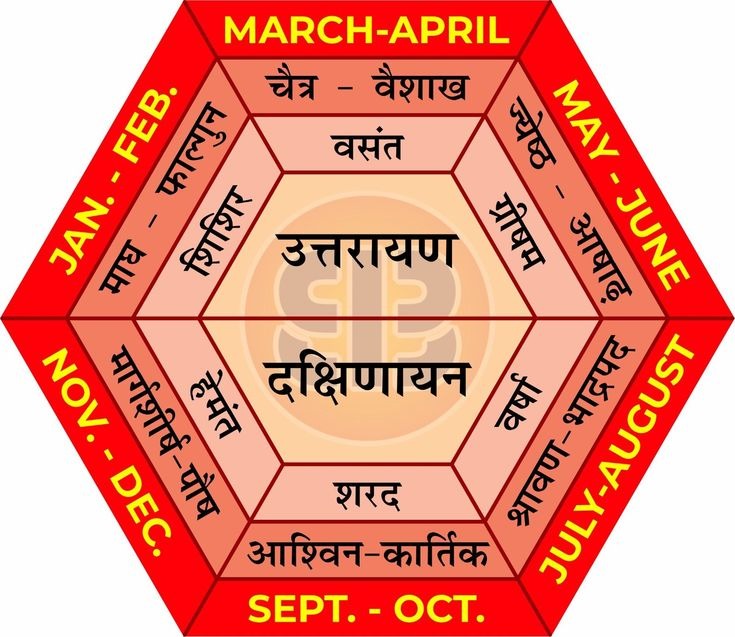Why Hindu Festivals Have Different Dates Every Year: The Science Behind the Hindu Lunar Calendar
Explore how the Hindu lunar calendar and Panchang guide festival dates. Uncover the deep scientific, astrological, and spiritual wisdom of Sanatan Dharma.
RELIGION
4/7/20255 min read


Why Hindu Festivals Change Dates Every Year: The Science Behind the Hindu Calendar That the Left Ignores
In today’s fast-paced digital world, many Hindus—especially the youth—are left puzzled by a simple question: “Why do Hindu festivals change dates every year?” This question isn’t just innocent curiosity. It’s often used by leftist intellectuals and secular skeptics to paint Hindu traditions as unscientific, chaotic, or out of sync with the modern world.
But here's the truth—Hindus don’t follow the Gregorian (solar) calendar. We follow something far more advanced and deeply rooted in astronomical accuracy: the Panchang, or the Hindu Lunisolar Calendar.
Let’s decode this misunderstood system, break down the science, and expose how it reflects a civilization that was far ahead of its time.
What is the Hindu Calendar?
The Hindu calendar, also known as the Panchang, is a Luni-Solar calendar. That means it calculates time using both the phases of the Moon (Lunar) and the position of the Sun (Solar).
It is an intricate system built on deep astronomical knowledge, developed by ancient Rishis and astronomers like Aryabhata, Varahamihira, and Bhaskaracharya. Unlike the Western Gregorian calendar, which is purely solar, the Hindu calendar aligns with natural cosmic cycles.
There are two main types of calendars used in India:
1. Amanta (Lunar month ends with new moon) – followed in Maharashtra, Gujarat, Andhra Pradesh, and Karnataka.
2. Purnimanta (Lunar month ends with full moon) – followed in North India.
Both are based on Tithis (lunar days), Nakshatras (constellations), Pakshas (fortnights), and Masa (months).
Why Hindu Festivals Fall on Different Dates Each Year
This is where most people get confused. Hindu festivals don’t follow fixed dates like “25th December” or “31st October” because they are not based on the Gregorian calendar. They are based on Tithis, which are dependent on Moon phases.
Example: Diwali
In 2023, Diwali was on 12th November.
In 2024, it will fall on 1st November.
In 2025, it will fall on 21st October.
This variation happens because Diwali is celebrated on Amavasya (New Moon) of the Kartik month. Since the Moon’s cycle doesn’t align perfectly with our 365-day year, the date of Amavasya shifts every year.
The Science of Tithis and Why They Matter
A Tithi is essentially a lunar day. There are 30 Tithis in a lunar month—15 in the waxing phase (Shukla Paksha) and 15 in the waning phase (Krishna Paksha).
A Tithi is calculated by the angular distance between the Sun and the Moon.
Each Tithi lasts between 20 to 27 hours, not 24 hours like a solar day.
This is why Hindu festival timings often begin or end at unusual times—say 2:40 PM on one day to 1:10 PM on the next. It’s because the Tithi exists only during those hours. This precision shows that the Hindu system is scientifically accurate, not randomly chosen.
Why the Hindu Calendar is More Advanced Than the Gregorian System
While the Western calendar marks months arbitrarily (e.g., July and August have 31 days just because Roman emperors wanted it), the Hindu calendar is based on:
Moon Phases
Solar Transits (Sankranti)
Planetary Positions
Nakshatras and Rashi (zodiac signs)
Each Hindu month actually begins and ends with astronomical events. It is a natural calendar, not an artificially fixed system.
Ancient Hindus knew that:
A lunar month is ~29.53 days.
A solar year is ~365.24 days.
To bridge this gap, we use Adhik Maas (extra month) every 32.5 months to adjust the calendar and align festivals with seasons. This is just like the leap year in the Gregorian system—but more complex and astronomically accurate.
Leftist Misrepresentation: A Secular Attack on Our Traditions
Let’s be honest. The leftist academia and English media in India have tried hard to paint Hinduism as superstitious and irrational. They mock our calendars, festivals, rituals, and temple timings without understanding the science behind them.
But here’s the irony: NASA and global astronomers acknowledge the accuracy of Indian astronomical calculations from ancient texts like the Surya Siddhanta—written at least 1500 years before Galileo. While the West was still debating if the Earth was flat, Hindus had calculated:
The diameter of the Earth,
The time taken for Earth to orbit the Sun,
And the distance between planets with amazing accuracy.
Yet our modern textbooks teach Copernicus, not Aryabhata.
Examples of Major Hindu Festivals and Their Astronomical Basis
Let’s look at a few key festivals and how their dates are calculated:
Makar Sankranti – Fixed Solar Event
Celebrated on 14th January, when the Sun enters Makara Rashi (Capricorn). It marks the Uttarayan (northward journey of the Sun). Unlike most festivals, it is based on solar transit and thus mostly fixed.
Holi – Full Moon Festival
Celebrated on Purnima of Phalguna month. Its date changes each year because it's based on the lunar calendar.
Raksha Bandhan
Celebrated on Shravan Purnima, again a lunar date.
Navratri and Dussehra
Begin on Pratipada (first lunar day) of Ashwin Shukla Paksha.
Dussehra is on the 10th day (Dashami)—calculated from the Tithi cycle.
Each festival has a deep cosmic, seasonal, and spiritual alignment—not a random date from a man-made calendar.
Why Understanding the Hindu Calendar Matters Today
1. Cultural Continuity: Knowing the calendar connects us to our ancestral knowledge system. We are not blindly following rituals; we’re aligning with nature and the cosmos.
2. Countering the Narrative: The Left has succeeded in alienating our youth from their roots. Understanding the Hindu calendar is a powerful way to reclaim our narrative.
3. Spiritual Relevance: Tithis and Nakshatras are not just time markers; they affect our mental, emotional, and spiritual energies. That’s why rituals are prescribed at specific times.
Conclusion: Hindu Calendar is the Soul of Sanatan Dharma
The Hindu calendar is not just a tool for marking festivals—it is a cosmic blueprint that syncs human life with universal rhythms. It reflects the genius of Bharat’s civilization, where science and spirituality merged seamlessly. While the leftist lobby tries to label our traditions as backward, the reality is: our calendar system is more scientific than the Gregorian one. It’s time we stop apologizing for it and start owning it with pride. Let us teach our youth that there is nothing "random" or "confusing" about Hindu dates—it is precision backed by the cosmos. And no Western lens can match its depth.
FAQs Section (Boosts SEO + Featured Snippet chances)
Q1. Why do Hindu festival dates change every year?
Because Hindu festivals follow the lunar calendar based on Moon phases, not fixed solar dates.
Q2. What is the role of Tithi in Hindu festivals?
Tithi is a lunar day and determines when a festival is celebrated. It changes based on Moon-Sun angle.
Q3. What is Adhik Maas?
It’s an extra month added every ~32.5 months to align the lunar year with the solar year.
Q4. Is the Hindu calendar more accurate than the Gregorian calendar?
Yes, it aligns closely with natural cycles and was built with advanced astronomical understanding.
CTA (Call to Action):
Loved the clarity? Want to know more such stories ?
Regularly visit our website for- indicminds.in

